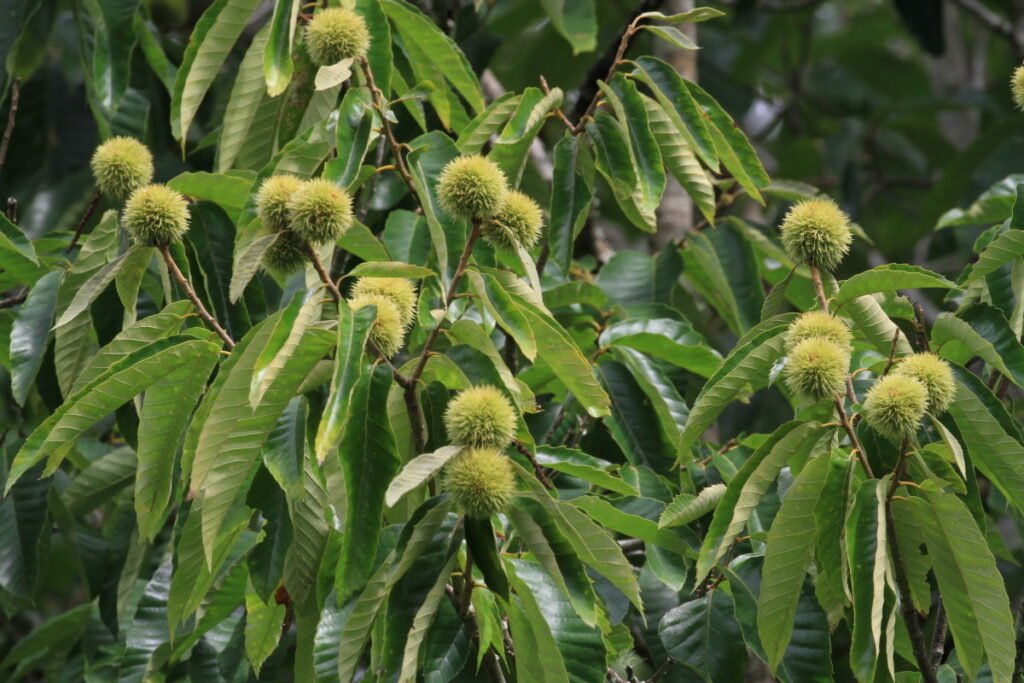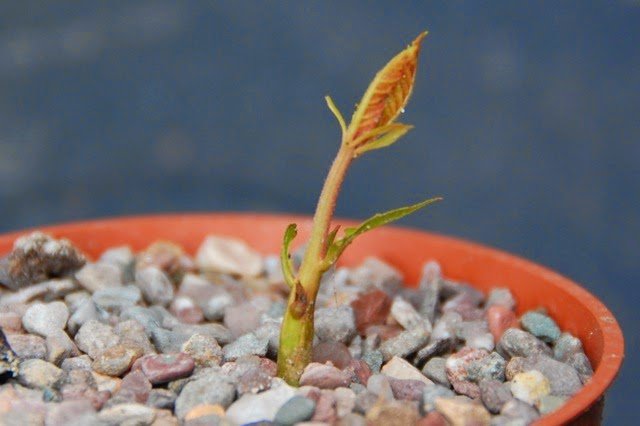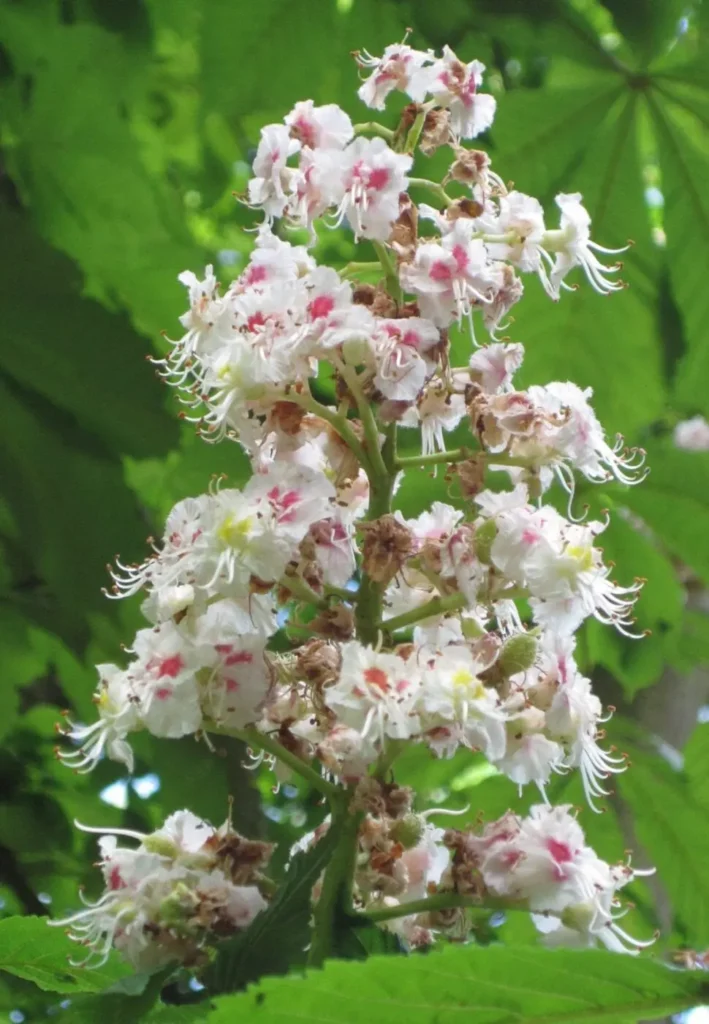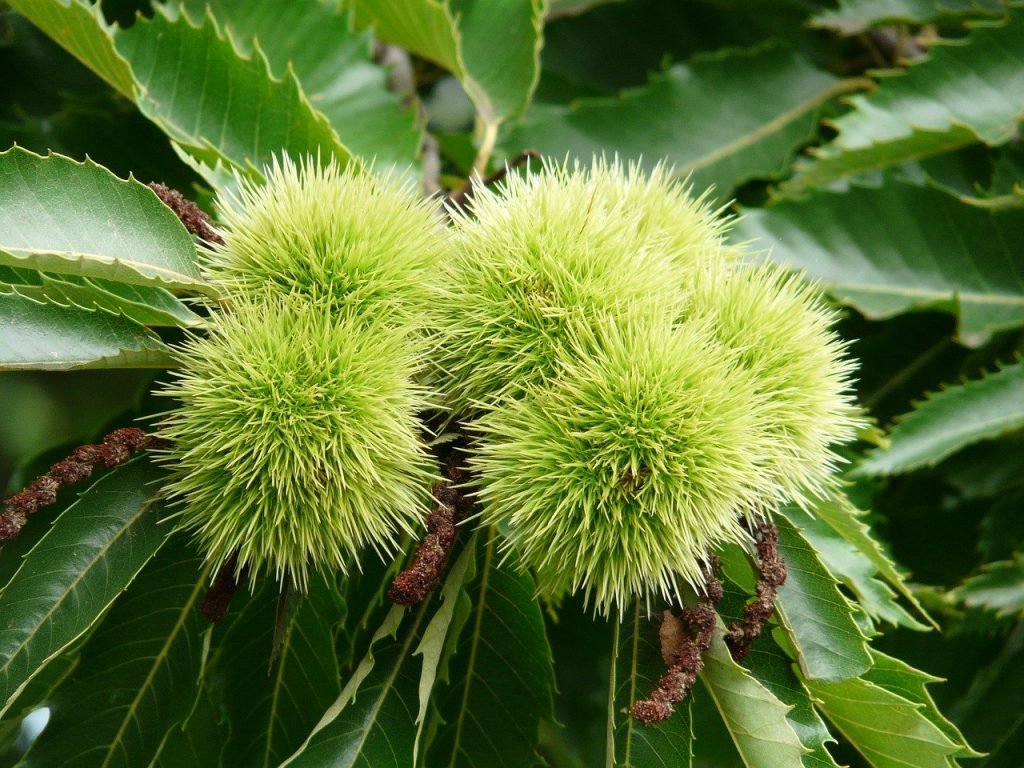How To Grow a Chestnut Tree In 2 Simple & Effective Way
How To Grow a Chestnut Tree
If you are passionate, looking forward to adding a new touch of elegance and flavor of joy to your garden? Yes, then you should consider growing chestnuts! These are among the most amazing planting trees that not only provide shade ,coolness and beauty to your outdoor garden space but also yield a bunch of nutritious and delicious nuts for making new recipes in the kitchen.
In this engaging article, we are going to learn everything and anything that you need to know about growing chestnuts from zero like, how to grow a chestnut, from selecting the perfect variety to caring for your trees, how to grow a chestnut from seed, how to grow a chestnut from sapling and enjoying our harvest after beautiful bloom.
From thousand of year Castanea sativa commonly known as chestnut tree is grown for its nuts, tree is native to temperate regions like southern Asia and Europe and deciduous in nature.
It is also a substitute for potatoes and flour in different regions. The Chestnuts are believed to have twice the amount of starch in potatoes and a considerable amount of carbohydrates, which helps make sweet dishes and desserts.
Quick facts: about Chestnut tree
| Species | Castanea sativa |
| Common name | Chestnut Tree/Sweet Chestnut |
| Height of Different Variety | American varieties – Over 80’ European varieties – 65’Chinese varieties – 40’ |
| Distribution range | Temperate regions of the world – Southern Europe, Asia, America |
| Uses | The American variety are rich in tannin, useful for cold, cough, helpful in breathing issues, arthritis, and also works as an effective sedative. The European and Asian varieties offer high-quality wood for multiple purposes and also produce edible seeds and fruits. |
| Best season to grow your plant | For colder regions – Early SpringFor warmer regions – Early Fall/Autumn |
| Care and maintenance | Use well-draining sandy soilPlace your plant in full sun for growthAvoid overwatering to reduce risk of rottingFertilizing with proper dosage of nutrients Removing unwanted weeds |
| Environmental Impact | Chestnuts are fast growers, Chestnut trees help reduce greenhouse gasses from the environment in large amounts. |
Chestnut tree: Physical description
So, before you start your chestnut growing journey, choosing a variety that fits your climate and space requirements is essential. There are several types of chestnut trees to consider and some of the most important once are as follows
American Chestnut – These are about 16-32 meters tall in height with dark reddish or Chestnut brown twigs and bullet-shaped brown flower buds. The mature leaves are hairless, thin as paper, and light green in color, drooping from the twigs, while the burs with up to 3 nuts hang at the end of the branch.
European Chestnut – These are tall and straight with less side branching, like the American variety, but the leaves of the plant are hairy and straight. The twigs are thicker and coarser when thry are young but become smoother when they mature. The nuts are almost the same size as an American Chestnut, and each bur bears 2-4 of them.
Chinese Chestnut – These are more tolerant and resistant to pest and disease than the other varieties . These plants are easily identified by their more oval-shaped, thicker and leathery leaves that rarely have hair on the upper surface. The buds are dull-brown to black, and the nuts are 1.87-5 cm in diameter.

How to grow a chestnut tree at home
Growing a chestnut tree at home is as simple as growing a vegetable in your kitchen garden. There is no rocket science in growing. First, you must choose a variety you want to grow at home. You will need a considerable space in your backyard to grow the tree, which attains a height of a minimum of 40 feet to grow a chestnut tree as a tree 20-22 meters tall needs some space.
Among ll the varieties American variety is the tallest and produces the sweetest nuts, European varieties are more resistant to biotic and abiotic stress with a lesser height than their American. The Chinese varieties are the shortest among all but produce the largest seeds. Select the one you want to cultivate, depending on your preferences and land area and type.
Planting and Caring for Your Chestnut Trees
Once you have selected the right chestnut variety for your garden and according to your fit, the question of how to grow a chestnut tree still prevails, so it’s time to plant your trees and ensure their proper care. You should follow these simple steps for a successful chestnut-growing experience:
Planting Chestnut Trees
Select a sunny location with well-draining soil. Chestnuts do not love shade and require sunlight.
Dig a hole twice the width of the tree’s root ball while keeping the top soil separated and bottom soil separate.
Place the tree in the hole, ensuring the root collar is slightly above the soil level and try not to disturbed the root ball.
Fill the hole with soil by first adding the top soil and then the bottom soil as the most fertile soil available is the topmost soil and water adequately.
Caring for Chestnut Trees
Regularly water your chestnut trees, especially during dry periods during the initial stage of planting a tree, try not to dry out the soil.
Mulch around the base of the trees to retain moisture and prevent weed growth as wees will compete with your plant
Prune your trees in late winter to promote airflow and optimal fruit production pruning has great benefits we will discuss later in the article with simple methods to prune.
Apply a balanced fertilizer annually to support tree growth.
How to Grow a Chestnut trees with seeds
According to our gardening experts, to cultivate the Chestnut tree from seeds is much easier and less labor-intensive as compared to other methods.
How to Collect Chestnut Seeds
After flowers are pollinated by wind and insects, small burrs develop on the tree, which contains the growing chestnuts.The burrs mature over time on the tree itself, eventually splitting open to reveal the precious chestnuts inside. You might manually harvest them from trees or just wait for them to fall naturally. Now, chestnuts are ready to be sown in your beautiful garden. Never sow a freshly harvested seed? We Will help you with how to grow a chestnut tree, first dry out your seed to 7-9% moisture content. And store for next season as the time comes to plant your seed in the potting mix.
Even when seeds are dried they can’t grow then, then how to grow a chestnut tree? For that you need to break dormancy of the seed by placing the seed between two moist tissues and placing that tissue in an airtight plastic bag.
Place your bag inside your fridge in the vegetable compartment or where it is not disturbed but not in the freezer. Within few weeks you will see a seed starts to sprout, once seed has sprouted inside your fridge it’s time to sow it
Prepare a potting mix for your seed using cocopeat, vermiculite, perlite, and some compost to create a well draining soil mixture with nutrient rich medium.
Place your sprouted seed in the medium by creating a small hole in the pot not too deep, place the seed and cover it with some soil and water it thoroughly. Within a week you will see your seedling is growing.

How to Grow a Chestnut trees with sapling
So you have learnet to grow a chestnut tree from seed but what if you want to eliminate all these steps of breaking dormancy and all for that you need to know to grow a chestnut tree from sapling .However, planting a sapling reduces the harvesting time and improves the plant’s disease-resisting capacities. If you live in a area which has tropical environment, plant the saplings in early autumn, so the plant is ready to pop up in spring with its full potential
For sapling simply prepare the potting mix you have prepared for seed and place your sapling in the mix but remember do not over water the pot and do not water daily as it will cause roots to root.
Soil requirements for growing Chestnut tree
Having a piece of sufficient knowledge about the soil requirements of a Chestnut tree is the most crucial consideration step in its cultivation. All varieties require well draining and good moisture-retaining soil, preferably sandy-loamy. These plants also thrive well in clayey soils if there is a slope.
Another important thing to note while cultivating is that these tree requires acidic soil to grow, you can check your soil ph by buying a simple soil ph indicator from online store. Usually the pH of 4.5 to 6.5 is considered best to grow Chestnut trees which is the normal pH found in soil generally.
Watering requirement for growing Chestnut tree
You need to water the young growing plant in regular intervals throughout its growing season. It will help the tree produce larger, fuller-sized nuts after 3 years. Make sure that the plant gets an inch of water at the root zone every week. If your garden soil is fast-draining then you may need to water the plant 2-3 times a week. The soil should remain moist at all times but not soggy during the growing session, remember never to overwater your plant. If you are living in area which have a warmer climate make use of mulch around the roots to reduce water looser from soil through evaporation and ease your pressure to some extent.
Fertilization requirements for growing Chestnut tree
To grow a Chestnut tree, you need a mixture of all essential nutrients. An all-purpose, balanced fertilizer is deemed best for its growth. To facilitate the growth make use of FYM near the roots also add well rotted compost around the root area for added benefits but make sure the compost is completely rotten otherwise it will make your plant suffer and your plant will eventually die. Adding some mulch will also help retain moisture and encourage helpful living creatures, like earthworms, some fungal growth that benefits the plant, making it harder, sturdier and more resistant to diseases.
Note: When the tree starts showing one foot of healthy growth annually, know that it does not require any more fertilizing.
Growing Chestnut trees in pots
A Dwarf variety of chestnuts known as horse chestnuts should be grown in pots for a few years before planting them in the ground. However, if you’re an enthusiast or a bonsai lover then you can turn them into bonsais and continue to grow in pots. Here is how:
Horse Chestnut trees love the chills and cold weather, so you need to keep them in a cooler place to release the embryos from dormancy. Cover the container with plastic or glass to retain moisture and mist whenever it feels dry.
As the plant starts growing leaves, move it to a larger container and place it in a sheltered location, away from direct sunlight. After a year or so , you can either plant it on the ground or start training it as a bonsai.
In the following year, place the plant in a new container and prune the taproot (about two-thirds of the entire system). But always remender the right time to prune the roots or you will eventually be killing the plant and you will be surfing how to grow a chestnut bonsai.
After 3-4 years, the tree will develop an interesting bonsai form that you should keep in containers for its aesthetic value. The only work you have is to keep repotting the plant every few years to keep it healthy and growing. And woala you have created a masterpiece

Chestnut tree: Care Tips
Heading back and pruning are the two main interculture maintenance criteria the Chestnut tree requires. Use a pruning scissor or a scateures to cut back branches with less than one inch in diameter. Use loppers for branches that are 1 to 2.5 inches and saws for those bigger.
Pruning of diseased branches is very important , you should complete this in winter. But make sure that you do not prune the tree during the monsoons, as it may make it easier for diseases and pests to invade the pruning wounds.Give a beautiful shape to your tree.
Chestnut tree: Benefits
The very first thing that comes to mind of people when discussing the benefits of Chestnut trees is their edible seeds. The Chestnuts are very mildly sweet in taste, seeds are versatile and can be used in several dishes, like salads and soups and also to develop delicious treats during Christmas and other festivities. Seeds dried and crushed to use in tea for providing a unique taste and flavour
The nuts contain valuable nutrients, like proteins, carbohydrates, rich-fiber, copper, manganese, helpful fat, vitamins B6 and C,. Even all the nutrients, the most beneficial thing is that they are low in fat than other nuts and packed with proteins, which is why they are preferred for fitness over other nuts by fitness freaks.
These are also loaded with antioxidants, like tannins, alkaloids, polyphenols, zeaxanthin, etc., which protect your organs and systems against free radicals. Chestnuts helps in improving cardiovascular health issues and helps in controlling blood sugar for diabetics. The nuts have anti-inflammatory properties and are essential to your weight loss regime.
Chestnut tree: Toxicity
The Horse Chestnut is considered toxic and should not be consumed. It contains a compound named “Sapolin Aesculin” which is harmful for humans, a toxin that makes all parts of the plant highly poisonous. Besides stomach irrigation, it has been reported that children who accidentally consume horse Chestnut seeds experience muscle twitching, mobility issues, and even paralysis
Growing Chestnuts: From Blossoms to Nuts
Witnessing the growth stages of your chestnut trees is a fulfilling experience. Here’s what you observe during the growing journey of your chest nut trees.
Flowering Stage
Chestnut trees produce small and yellowish-green flowers during late spring or early summer season. Pollination in flowers usually occurs either through the wind, as the flowers are either male or female.

Nut Development
After pollination has done in flower, small burrs start to develop on the tree, containing the growing chestnuts.The burrs mature over time, ove mature they split open to reveal the prized chestnuts inside.

Harvesting
Chestnuts are typically ready for harvest in the fall, usually between September and November.
Collect the nuts once they fall to the ground, ensuring they are firm and plumpy.
Enjoying Your Chestnut Harvest
Finally , its time after months and months of nurturing your chestnut trees, you can enjoy the fruits of your labor with delicious ways to savor your homegrown chestnuts.
Conclusion
In this comprehensive guide we have learned to grow a chestnut tree in various ways. Growing of chestnut tree in your garden or outdoor space can be a rewarding experience that brings moments of joy and delicious treats to your home, but one thing you have to remember is that it requires patience as from seed to seedling and sapling to tree it takes time and labor and patience to make a seed grew up into a tree producing fruits.
By selecting the variety that fits best for your area and garden, planting and caring for your trees lovingly, and relishing in the harvest, you can explore the wonders of chestnut cultivation and its ups and downs. So,let’s get started, roll up your sleeves, put on your gardening gloves, and start growing your chestnut trees today.

